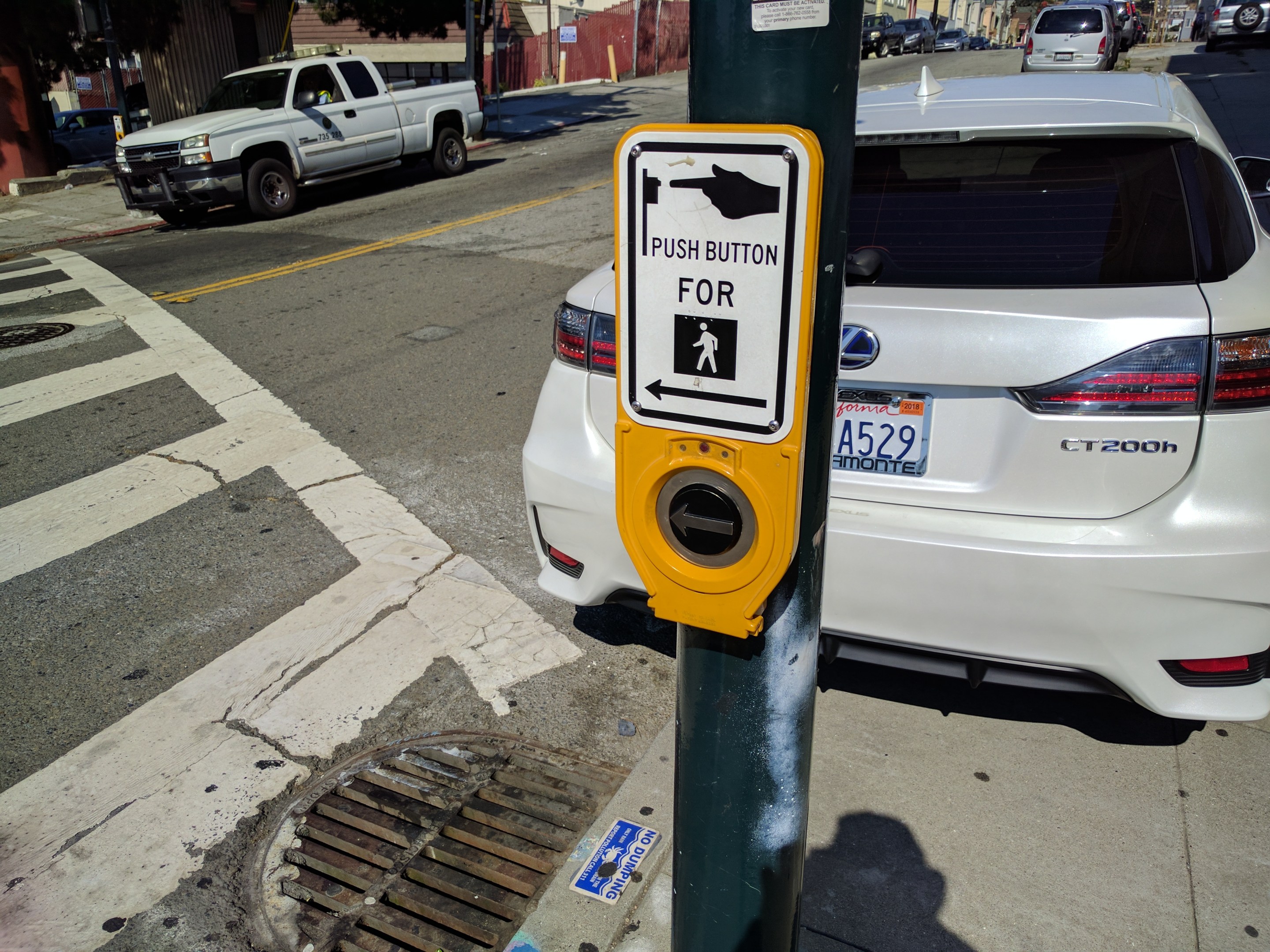Note: GJEL Accident Attorneys regularly sponsors coverage on Streetsblog San Francisco and Streetsblog California. Unless noted in the story, GJEL Accident Attorneys is not consulted for the content or editorial direction of the sponsored content.
Perhaps nothing symbolizes what's wrong with our streets more than the dreaded "Beg Button." Signal-call buttons basically say that the time of someone walking is worth a fraction of what it's worth if they drive a car. No matter how many people are waiting to cross the street on foot, they have to push a button and wait until they are given special permission to cross, lest they interfere with the smooth and fast movements of motorists.
Livable City's Tom Radulovich is launching a campaign to change that. He wants beg buttons deactivated and removed around the city, a trend that's underway in other cities. He's urging San Francisco advocates to join his campaign and write to the SFMTA board, its chief Jeffrey Tumlin, and planners/directors Sarah Jones, Tom Maguire, and Julie Kirschbaum.
Here's his letter. Feel free to borrow from it:
***
Dear SFMTA Board,
On behalf of Livable City, I am writing to ask that SFMTA prioritize the removal of beg buttons citywide.
Beg buttons require people walking to press a button in order to get a green walk signal at a traffic light. If no one presses a button before the light turns green there is no walk signal, so to cross at the light one has to press the button then wait an entire signal cycle for permission to cross. Beg buttons are distinct from the audible signal buttons, which create an audible walk signal at an intersection with a programmed walk phase. It’s easy not to notice beg buttons until you’re denied the walk signal – most signalized intersections don’t have them, they’re often haphazardly placed, and can easily be confused with audible signals.
Beg buttons privilege the movement of cars, which always get a programmed signal phase, over people walking. Progressive cities don’t use them at all; a pedestrian walk phase is programmed in to every signal cycle at every intersection.
Since the pandemic, a growing number of cities have decided to start phasing out beg buttons altogether - Los Angeles, Sydney, Calgary, and Chapel Hill among them. They have done so as an immediate public health intervention – requiring people walking to press beg buttons has always unnecessarily increased exposure to infectious diseases, and now more cities are looking for ways to minimize such exposure. It’s also part of a growing worldwide movement to reclaim city streets and public spaces for safe, comfortable, and accessible walking and cycling.
We urge SFMTA to adopt a policy of phasing out beg buttons citywide, and immediately begin deactivating the City’s remaining beg buttons and programming a dedicated walk phase at every traffic signal in San Francisco. Beg buttons are clustered in a few places, including on important walking and transit routes. They were installed at most intersections on Third Street and Bayshore Boulevard, and walkers and T-Third riders must use the beg buttons to cross the street or access the transit boarding islands. MTA should reopen the T later this month with dedicated walk signals and without beg buttons.
Other streets with beg buttons include Bayshore Boulevard (at Bosworth and elsewhere), on Ocean Avenue (at the wretched Frida Kahlo/Ocean/Geneva intersection and around Balboa Park Station), on Portola, and along the Stanyan Street edge of Golden Gate Park. They should be systematically removed. Unlike beg buttons, audible signals are an accessibility improvement, and should be installed where they’re needed.
We appreciate the steps SFMTA has taken to rebalance the City’s automobile-dominated street network and improve safety and accessibility for sustainable modes of transportation. Beg buttons, like double-turn lanes and other street design features which marginalize, confound, or endanger people walking, cycling, or using transit, should quickly be retired from use and consigned to the past. Let’s make this one of the positive legacies of San Francisco’s pandemic response, and another step towards a more multimodal, sustainable, accessible, and equitable San Francisco.
We appreciate your attention to this matter.
Best,
Tom Radulovich
Executive Director
***
For a darkly amusing look at the history of our streets (the direct relevance to "beg buttons" and having to get permission to cross the street should be obvious by the end) check out this episode of Adam Ruins Everything:





